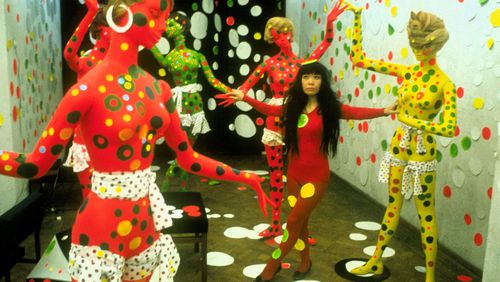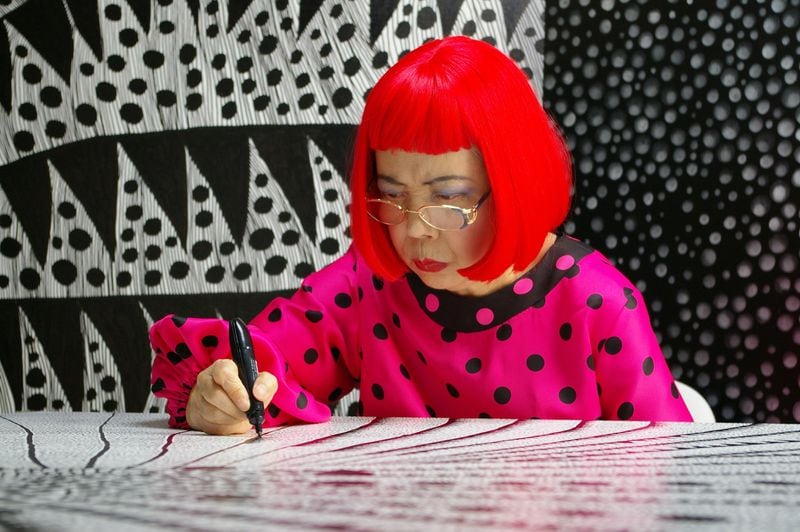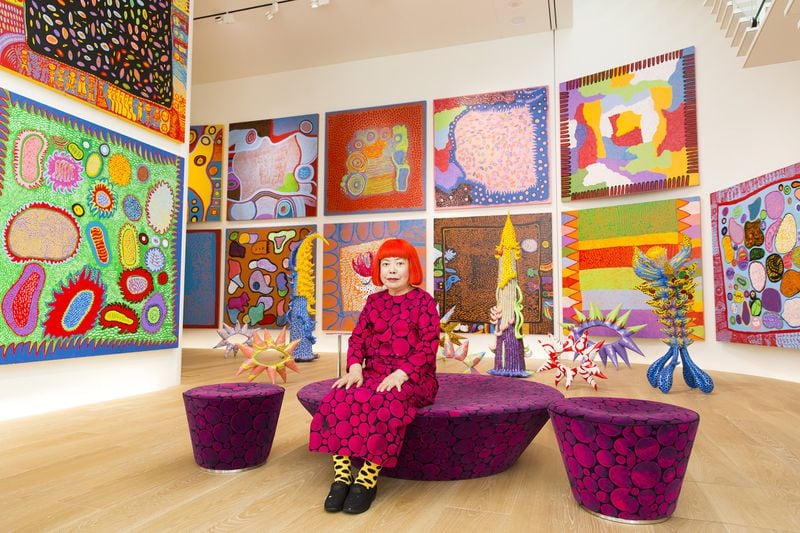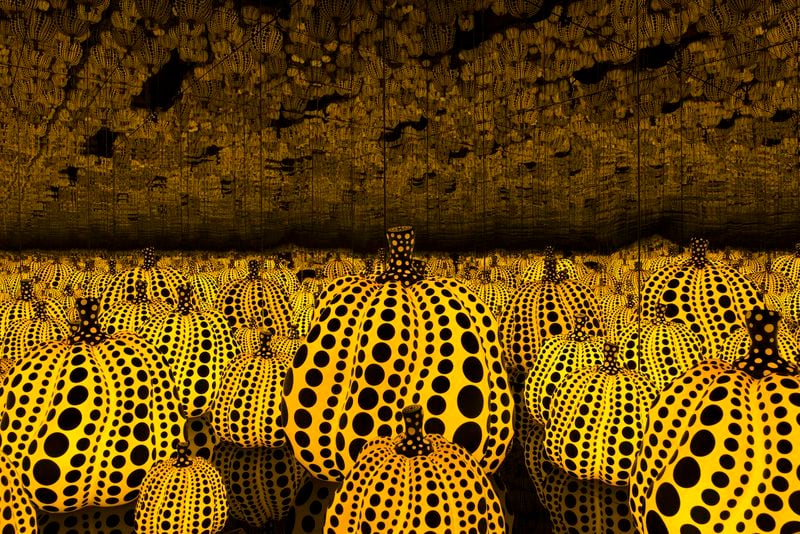The intense public fascination with the artwork of Yayoi Kusama, 89, is something to behold. Her "Infinity Mirrors" exhibit, coming to the High Museum in November, has drawn millions of followers worldwide.
Atlantans were willing to wait on hold for hours to buy advanced admission. The museum sold 28,000 tickets to the show in a single day.
Even more remarkable is the story leading up to Kusama’s moment in the sun. It is the story of a girl born to a wealthy but miserable family, a young woman who leaves postwar Japan to survive by her wits in New York, a flamboyant creator whose innovations are either ignored by the galleries or co-opted by more famous male artists, a broken woman who returns to Japan to live in a psychiatric hospital, and a senior citizen who, still hard at work in her 80s, becomes the most successful female artist on the planet.
The triumph — and tragedy — is told in "Kusama — Infinity," a documentary film which opens in Atlanta Friday, Sept. 21.
It was produced by Atlantan Karen Johnson, who, with producing partner Heather Lenz, began working on the film in 2004, when Kusama was still outside popular awareness.
Johnson was in film school at the University of Southern California when she heard Lenz pitch the idea: a documentary about an unknown female artist who had changed American art as much as the Beatles changed American music.
They pursued the project for 14 years, struggling to find investors. An obscure Japanese artist? Nobody was writing checks.
“Heather thought, at the beginning, that (with the movie) she was going to bring the recognition to Kusama that was so overdue,” said Johnson. Instead, Kusama’s fame has brought attention to the movie. “It went the other way.”
It was a slow climb. Kusama’s obsessive, repetitive polka-dot paintings, her “infinity net” environments, her nude “happenings,” her soft-sculpture creations, her mirrored installations earned attention in New York City, but not acceptance from galleries. One of her early representatives speaks of visiting Kusama’s apartment to find the artist and her belongings sitting on the curb. “At certain times, she didn’t have money for rent, food and supplies,” said Johnson.
In the meantime, her influence was obvious, prompting (the movie suggests) Claes Oldenburg, for example, to try soft sculpture, to great acclaim.
Johnson doesn’t suggest that anyone stole Kusama’s ideas, only that the New York scene didn’t reward female artists as it did males. “The same kind of ideas, put out by men, were being celebrated.”
Kusama also had to face childhood trauma, hallucinations and depression. In 1973, she gave up her pursuit of acceptance in New York and returned to Japan.
After her second suicide attempt, she knew she needed help, said Johnson. She found a psychiatric hospital that specialized in art therapy, and checked herself in, walking each day to her studio, which was nearby. She has continued to live voluntarily in the residential hospital for the past 40 years.
But sometime toward the turn of the century, the miraculous began to happen. Kusama represented Japan in the Venice Biennale of 1993. Her art was chosen for a major retrospective that opened at the Los Angeles County Museum of Art in 1998. Similar solo exhibitions were mounted in Osaka, Rome, London, Madrid, New Delhi, Rio de Janeiro and many other locales.
In 2012, she even collaborated with Louis Vuitton on a Yayoi Kusama collection of clothes, bags and scarves. All along, Lenz and Johnson kept working on their film, thinking, each year, that this must be the pinnacle, that their subject couldn’t get any more famous. But they were consistently wrong.
Today, said Johnson, Kusama seems enthused by the acceptance. “I think she takes a lot of joy from it,” said Johnson.
The diminutive Japanese artist often would don a red leotard, or paint herself with dots, and become part of her installations. Now, in the age of the selfie, her public can do the same thing. “Kusama has always wanted her art to be for a broader public and not just an art elite,” said Johnson. “With the invention of cellphones with cameras, and her immersive installations, where you can become one with the art, anybody can capture themselves with her art and sort of become part of the art now.”
MOVIE PREVIEW
“Kusama — Infinity”
Featuring Yayoi Kusama. A documentary film by Heather Lenz and Karen Johnson.
Not rated. Premieres in Atlanta Friday, Sept. 21, at Regal Tara Cinemas 4, 2345 Cheshire Bridge Road NE. 1 hour, 20 minutes.
About the Author










